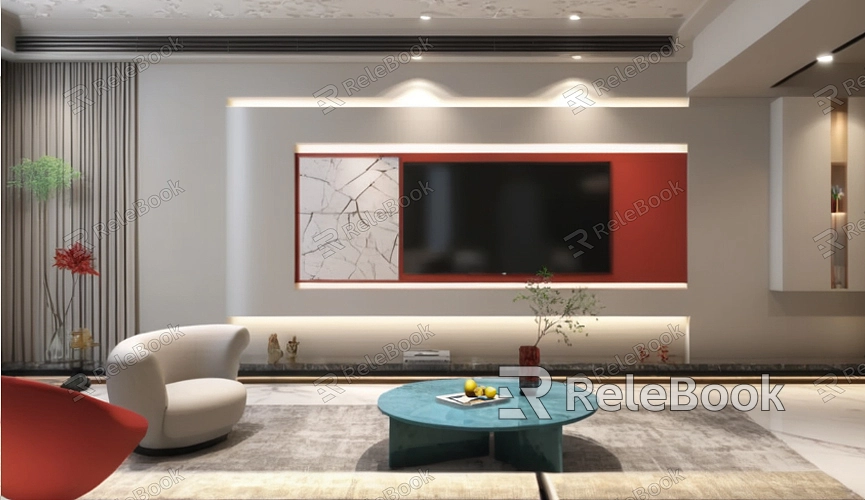How to Apply Textures to 3D Models?

Getting Started with Textures and UV Mapping
To start texturing, you first need to understand the role of textures and UV mapping. Textures are image files that are applied to the surface of a 3D model to provide visual detail. UV mapping is the process of flattening the 3D model’s surface into a 2D plane, allowing the texture to be correctly positioned and applied.
UV Mapping Process: Imagine unwrapping a gift box and laying out the wrapping paper flat. Similarly, UV mapping involves projecting the 3D model's surface onto a 2D plane. This allows you to paint or apply a texture accurately across the model. Proper UV mapping is crucial for ensuring that textures fit and align correctly.
Creating and Applying UV Maps
Once you have a grasp of UV mapping, the next step is to create and apply UV maps to your model.
1. Unwrapping the Model
Use your 3D modeling software to unwrap the model. This process involves cutting and flattening the 3D mesh into a 2D representation. Most 3D software, such as Blender or Maya, offers automatic and manual unwrapping tools.
2. Editing the UV Map
After unwrapping, you may need to adjust and optimize the UV layout. This involves arranging the UV islands (sections of the model) to minimize distortion and ensure efficient use of texture space. The proper layout helps in avoiding texture stretching or seams.
3. Applying the UV Map
Once the UV map is ready, apply it to your model. In your 3D software, this typically involves assigning the UV map to the model’s material properties and ensuring that the texture file is correctly mapped.

Creating Textures
With your UV map in place, it’s time to create the textures themselves. Textures can be created using image editing software or by generating procedural textures.
1. Using Image Editing Software: Tools like Adobe Photoshop or GIMP are popular for creating textures. You can paint directly on the UV map or use photographs and other images. Ensure that the texture aligns well with the UV map to avoid visual inconsistencies.
2. Procedural Textures: For some models, procedural textures (generated using algorithms) can be useful. These textures are created within 3D software and can provide effects like noise, patterns, or complex materials without needing external image files.
3. Texture Painting: Some 3D software allows you to paint textures directly onto the model. This technique is particularly useful for detailed or complex texturing, as it lets you see how the texture interacts with the model in real time.
Applying Textures in 3D Software
After creating your textures, apply them to your 3D model using your 3D software. Here’s how to do it in general terms:
1. Assigning Textures
In your 3D software, go to the material editor and assign your texture files to the corresponding material channels, such as diffuse, specular, or bump maps.
2. Adjusting Settings
Fine-tune the texture settings, including scaling, tiling, and offset, to ensure the texture appears correctly on the model. This step is crucial for achieving the desired look and avoiding issues like stretching or misalignment.
3. Previewing the Model
Regularly review the model with textures applied to check for any issues. This will help you spot and correct problems early in the process, ensuring a more polished final result.
Testing and Refining Textures
Once textures are applied, it’s important to test and refine them to achieve the best results.
1. Viewing in Different Lighting
Examine how the textures look under various lighting conditions. This helps to ensure that the textures work well in different environments and lighting setups.
2. Making Adjustments
Based on your observations, you may need to go back and tweak the textures or UV map. This iterative process helps in achieving a more realistic and visually appealing outcome.
3. Quality Checks
Perform final checks to ensure there are no visible seams, texture stretching, or other issues that could detract from the quality of your model.
FAQ
How do I start with applying textures to a 3D model?
To begin texturing a 3D model, first ensure that you have a properly unwrapped UV map. Once you have your UV map, create or obtain the texture images you want to use, then apply these textures to the model in your 3D software by assigning them to the model’s material properties.
What tools can I use to create UV maps?
UV maps can be created using various 3D modeling software tools, such as Blender, Maya, and 3ds Max. These programs offer both automatic and manual UV mapping tools to help you unwrap and arrange your model's surface for texturing.
How can I fix texture seams on my 3D model?
Texture seams often appear where UV map edges meet. To fix them, ensure that the UV islands are properly aligned and that the texture is seamless. You can also adjust the texture’s UV coordinates to minimize visible seams or use texture painting techniques to blend seams.
What are some common issues when applying textures, and how can I resolve them?
Common issues include texture stretching, misalignment, and seams. To resolve these problems, ensure your UV map is correctly laid out, use high-resolution textures, and preview your model under different lighting conditions. Adjust the UV layout and texture settings as needed to correct these issues.
How do I apply multiple textures to a single 3D model?
To apply multiple textures, use different material slots within your 3D software. Assign each texture to its corresponding material slot and map these materials to the appropriate parts of the model. This allows for combining different textures and achieving complex visual effects.

